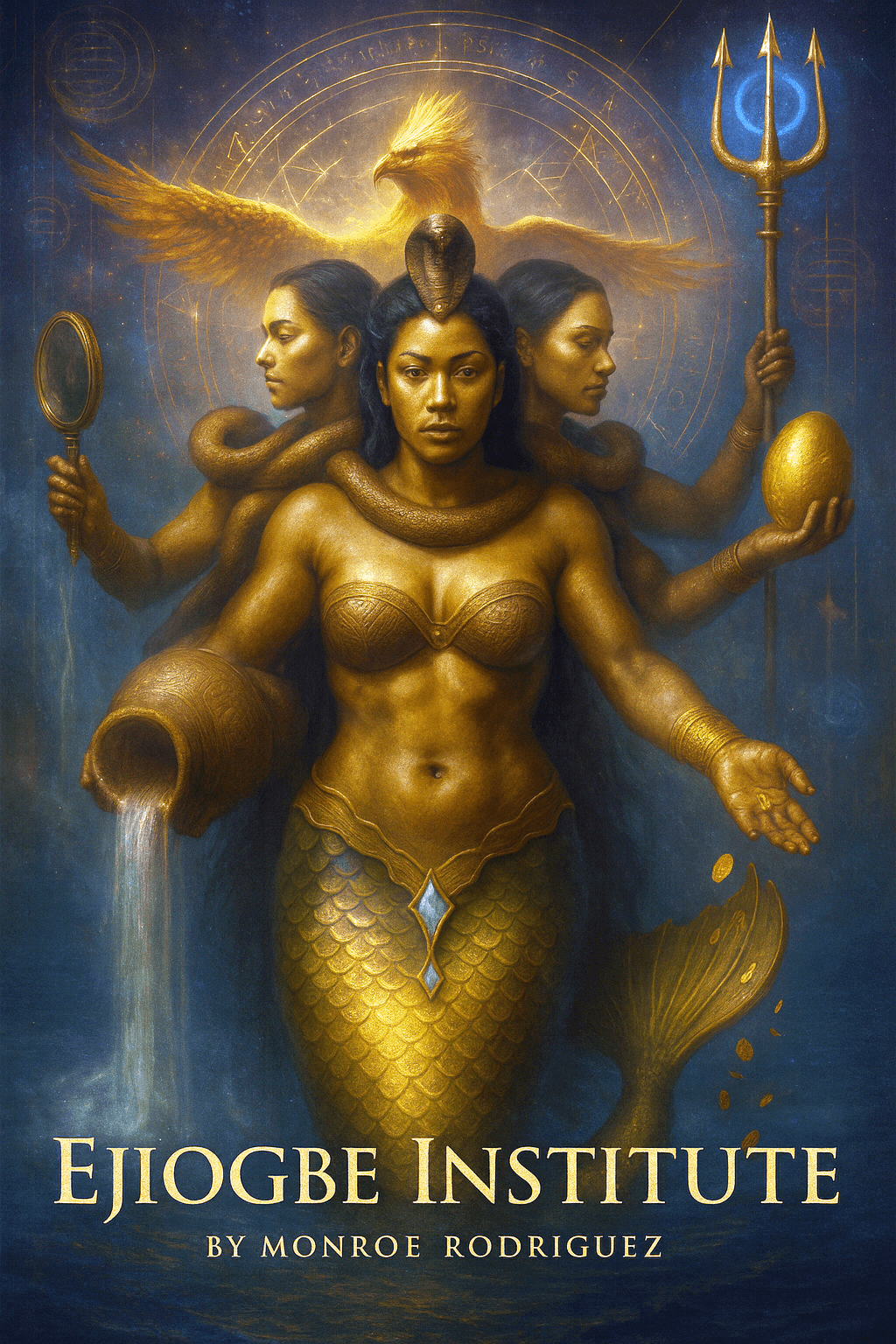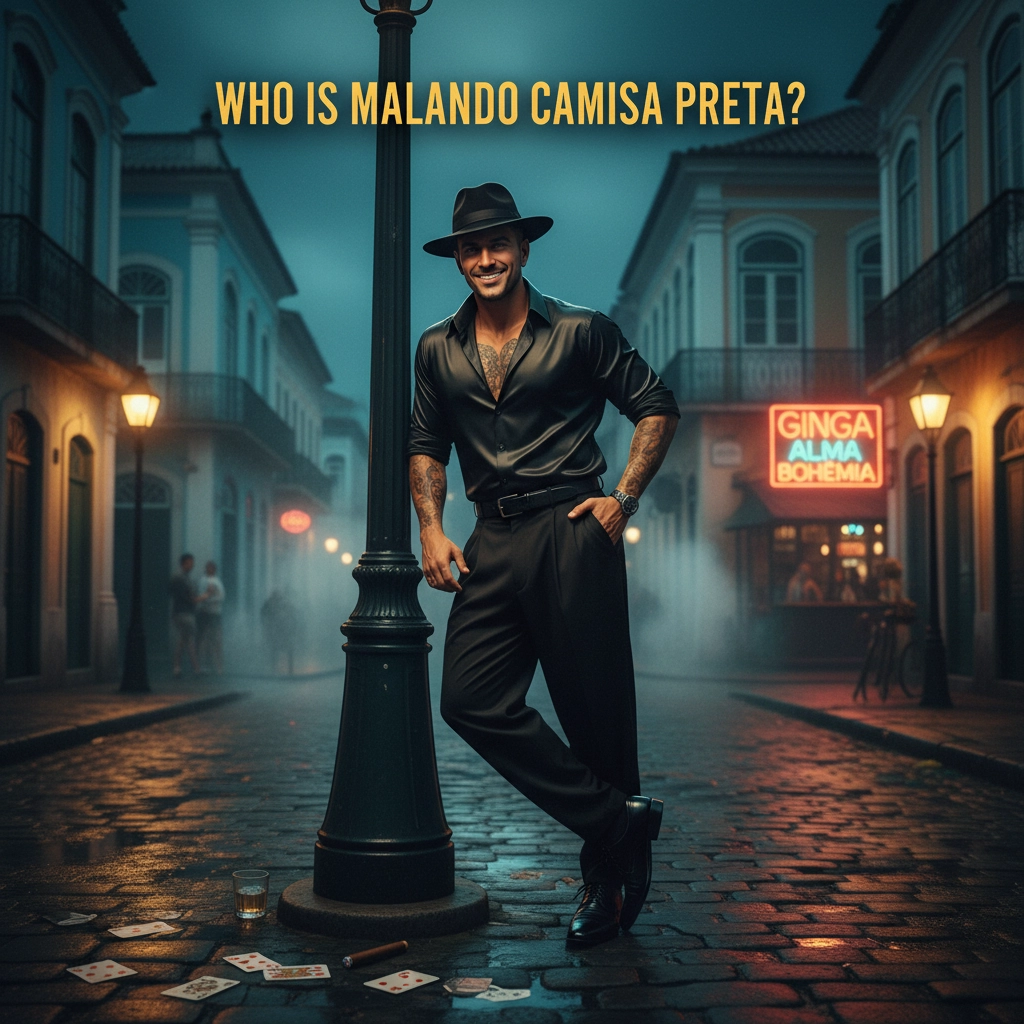Picture this: the cobblestone streets of early 1900s Rio de Janeiro, where shadows danced with danger and survival meant more than just staying alive: it meant staying sharp. In this world of capoeira circles, underground dealings, and street wisdom, one man's black shirt became legendary. But here's what most people don't realize: Malandro Camisa Preta isn't just a historical footnote from Rio's underworld: he's a spiritual force that continues to guide, protect, and challenge seekers today.
The Man Behind the Black Shirt
Alfredo Francisco Soares didn't choose his nickname: the streets chose it for him. Known throughout Rio as Miguel Camisa Preta, this figure embodied everything the malandro archetype represents: cunning intelligence, unshakeable loyalty, and the kind of street wisdom that keeps you breathing when others fall silent.
The early 1900s Rio de Janeiro wasn't the tourist paradise we know today. It was a city of contrasts, where former slaves and their descendants carved out survival in a society that offered them little. In this environment, the malandro emerged: not as a criminal, but as a cultural archetype representing those who refused to bow to a system designed to break them.
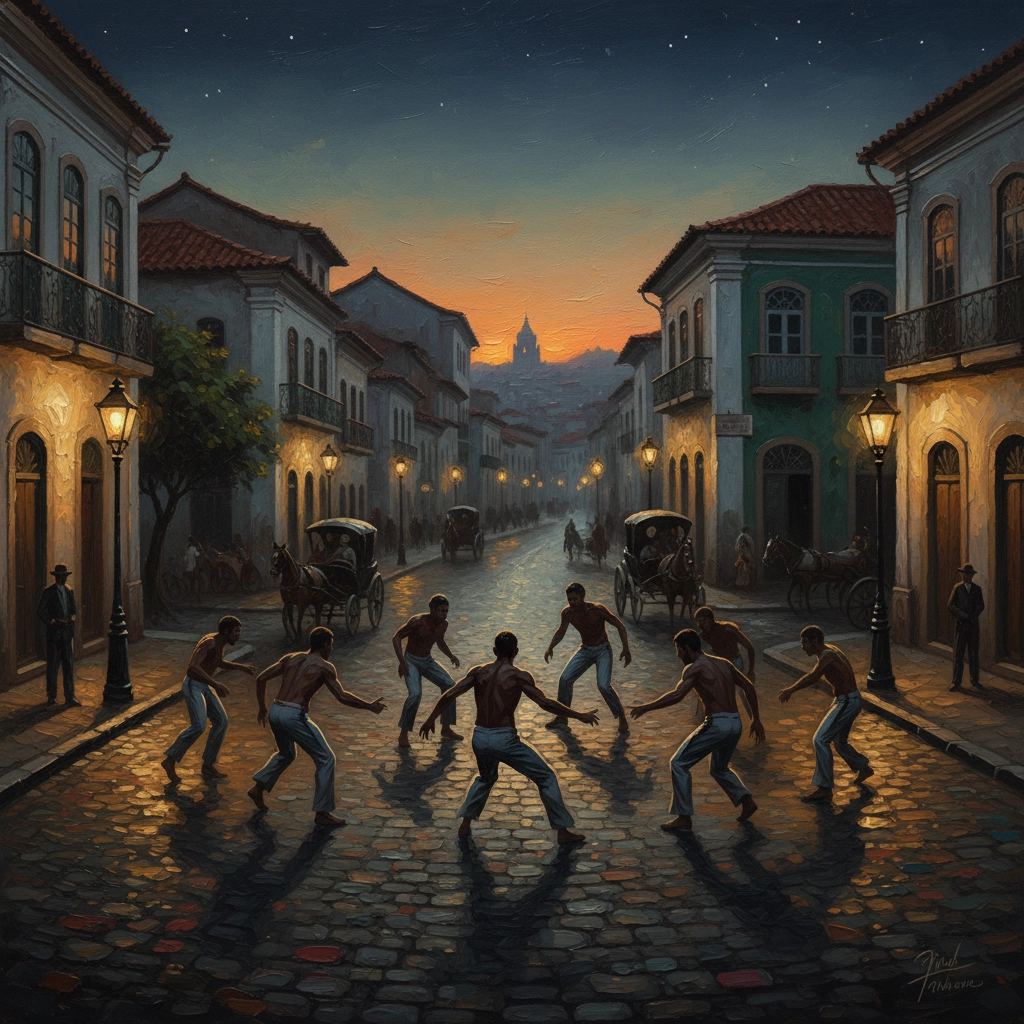
Miguel Camisa Preta moved through this world like water through stone: fluid, persistent, unstoppable. His black shirt became his calling card, a visual statement that said, "I am here, I am present, and I will not be ignored." In a society that tried to make certain people invisible, Camisa Preta made himself unmistakable.
He wasn't just surviving the streets; he was mastering them. As a skilled capoeirista, he understood that true power comes from the ability to transform defense into offense, to turn apparent weakness into unexpected strength. This wasn't just physical combat: it was a philosophy of existence.
The Fatal Encounter That Created a Legend
July 12, 1912. The date when history and mythology collided on Rua do Núncio. Police officer Elpídio Ribeiro da Rocha had marked Miguel Camisa Preta as an enemy, and their conflict reached its inevitable conclusion in the most dramatic way possible. According to newspaper accounts, Camisa Preta raised his hands: whether in surrender or defiance, we'll never know: before Rocha shot him in the forehead.
But here's where the story gets interesting. Death, it turns out, was just the beginning for Miguel Camisa Preta. In Afro-Brazilian spiritual traditions, certain individuals transcend mortality to become spiritual entities: guides, protectors, and teachers for the living. Camisa Preta's violent death, his unwavering spirit, and his deep connection to Rio's streets transformed him from a man into something far more powerful.
From Streets to Spirit: The Umbanda Connection
What happens when a malandro dies but refuses to disappear? In Umbanda, the answer is clear: he becomes an Exu, a spiritual entity who works between worlds, bridging the material and spiritual realms with the same street-smart wisdom he possessed in life.
Malandro Camisa Preta's spiritual form maintains the visual elements that made him legendary: the distinctive black shirt, crisp white pants, felt hat positioned just so, and those fine-pointed shoes that announced his presence before he even entered a room. But these aren't just costume elements: they're spiritual symbols carrying deep meaning.
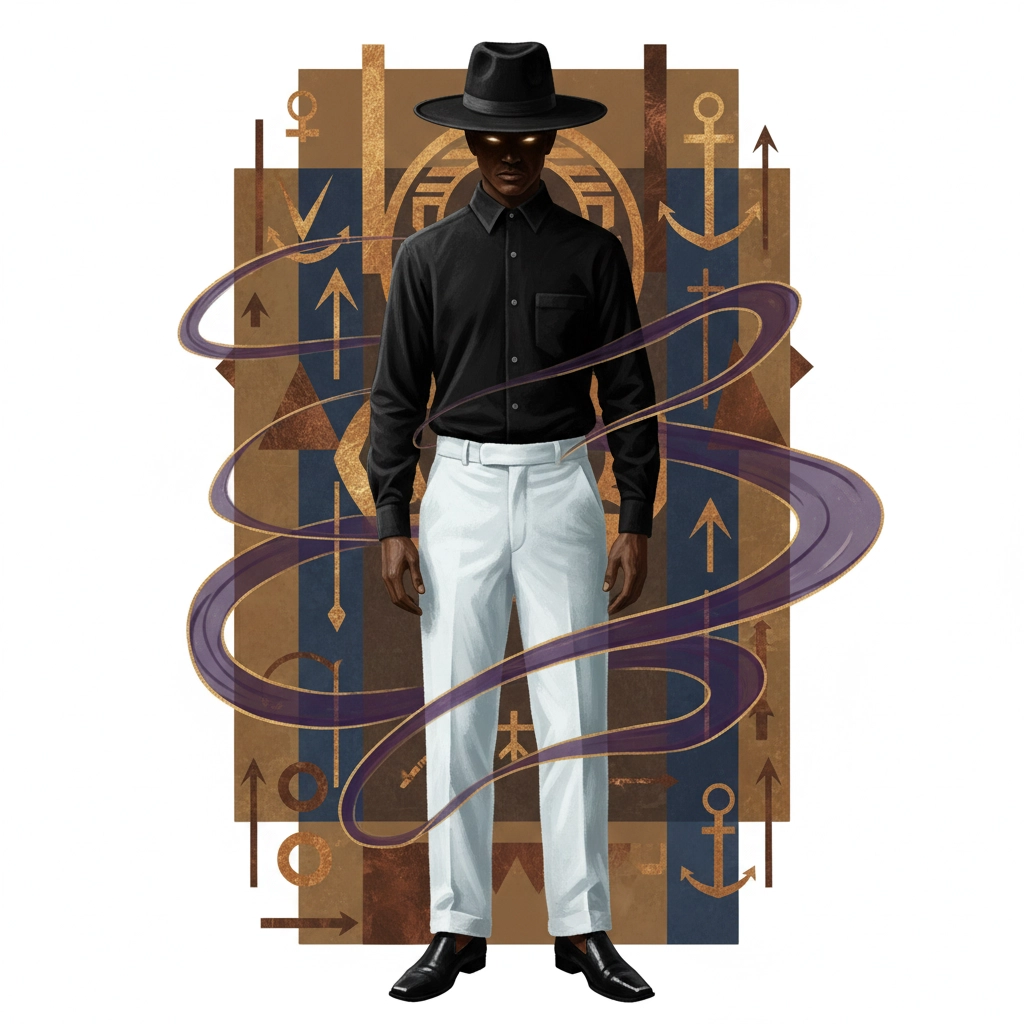
The black shirt represents his ability to move through darkness, both literal and metaphorical. Black absorbs all colors, just as Camisa Preta absorbs the challenges, negative energies, and obstacles that threaten those under his protection. The white pants symbolize purity of purpose: despite operating in morally gray areas, his intentions remain clear and just.
The Spiritual Work of a Street-Smart Guide
In modern spiritual practice, Malandro Camisa Preta works with practitioners facing situations requiring street wisdom, strategic thinking, and uncompromising protection. He doesn't offer gentle guidance: he offers hard truths delivered with the kind of love that refuses to let you make self-destructive choices.
His specialties include:
Opening Paths: When life feels blocked, when opportunities seem impossible, Camisa Preta applies the same strategic thinking he used navigating Rio's dangerous streets. He identifies hidden routes, unexpected allies, and overlooked possibilities.
Justice Work: Having experienced both sides of law and order, he understands the difference between legal and just. His interventions often focus on situations where conventional justice fails.
Protection Against Negative Energies: The streets taught him to recognize threats before they become dangerous. This translates into powerful protective work against spiritual attacks, negative influences, and energy vampires.
Strategic Guidance: Need to outmaneuver a difficult situation? Camisa Preta's approach combines street intelligence with spiritual insight, helping practitioners navigate complex challenges with grace and effectiveness.
Regional Variations and Cultural Respect
Depending on the region and spiritual house, you might encounter Camisa Preta under different names: Miguelim do Morro or Mané Soares. This isn't confusion: it's cultural richness. Different communities connected with different aspects of his energy, leading to variations that honor both his historical identity and local spiritual needs.
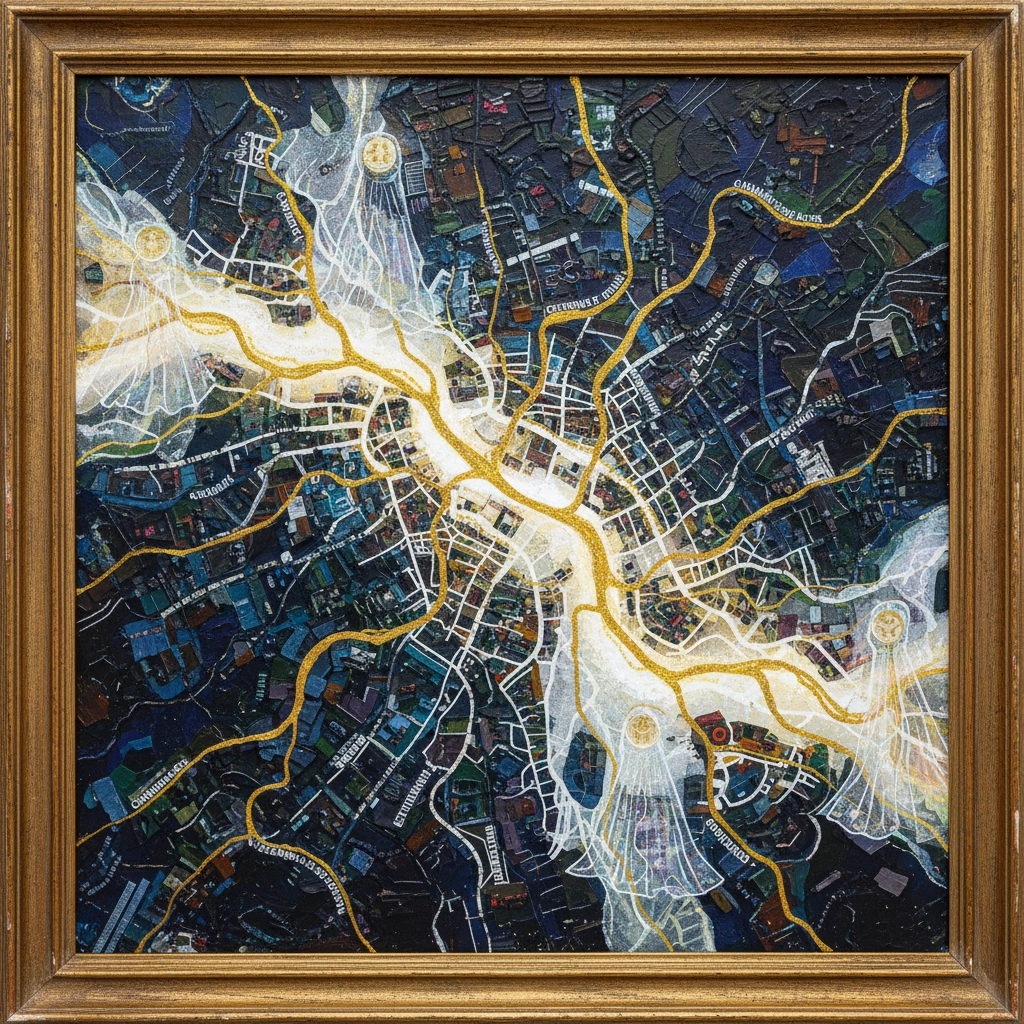
This multiplicity reflects something beautiful about Afro-Brazilian spiritual traditions: they recognize that spiritual entities, like living people, can be complex, multifaceted, and capable of connecting differently with different communities. Camisa Preta's various manifestations show how a single powerful spirit can serve diverse spiritual needs while maintaining core characteristics.
Working with Malandro Camisa Preta Today
Modern practitioners seeking to work with Malandro Camisa Preta should understand that he responds to authenticity, not performance. He has no patience for spiritual tourists or those seeking easy answers to complex problems. His energy is drawn to individuals willing to do the hard work of honest self-examination and genuine transformation.
Traditional offerings include quality cachaça, fine cigars, and foods associated with Rio's street culture. But more important than specific items is the intention behind them. Camisa Preta recognizes sincerity over extravagance, honest struggle over comfortable pretense.
When incorporating his energy into spiritual practice, practitioners often report increased confidence in navigating difficult situations, clearer perception of hidden dynamics in relationships and professional settings, and stronger personal boundaries. His influence tends to manifest as internal shifts rather than external miracles: he strengthens your ability to handle challenges rather than removing them entirely.
The Enduring Legacy of Street Wisdom
What makes Malandro Camisa Preta relevant in 2025? The same forces that shaped his historical existence: economic inequality, social marginalization, the need for communities to protect themselves: continue shaping modern life. His spiritual presence offers guidance rooted in real-world experience, not theoretical philosophy.

In an era of spiritual bypassing and superficial wellness culture, Camisa Preta represents something refreshing: spirituality with calluses, wisdom earned through struggle, and protection that doesn't shy away from life's harsher realities. He reminds us that true spiritual development often happens not in meditation cushions but in the messy, complicated, dangerous beauty of everyday existence.
Beyond the Black Shirt: Understanding the Archetype
Ultimately, Malandro Camisa Preta embodies an essential spiritual principle: the transformation of survival skills into service. His journey from street-wise survivor to spiritual guide demonstrates how our hardest-won wisdom becomes our greatest gift to others.
The black shirt isn't just clothing: it's armor. The street smarts aren't just cunning: they're compassion expressed through practical protection. The malandro's refusal to be broken becomes the spirit's commitment to preventing others from breaking.
In working with Camisa Preta's energy, practitioners tap into this archetypal transformation. They learn to alchemize their own struggles into strength, their survival skills into service, their hard-won wisdom into spiritual gifts for their communities.
This is why Malandro Camisa Preta remains not just remembered but actively engaged with: because every generation needs guides who understand that sometimes, the most spiritual thing you can do is refuse to let the world break you, then teach others how to stay unbroken too.
The black shirt endures. The wisdom deepens. And on the spiritual streets where survival meets service, Miguel Camisa Preta continues his work: one soul, one situation, one strategic intervention at a time.
